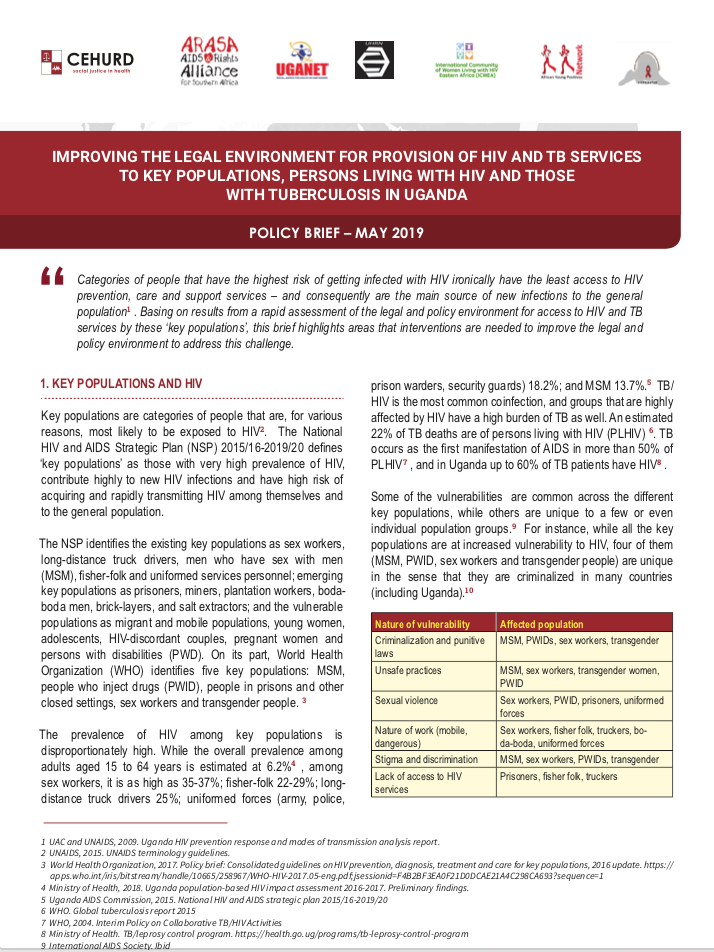- Version
- Download 18225
- File Size 1.10 MB
- File Count 1
- Create Date August 7, 2019
- Last Updated May 19, 2025
Policy Brief: Improving the legal environment for provision of HIV and TB services to key populations, persons living with HIV and those with tuberculosis in Uganda
Key populations are categories of people that are, for various reasons, most likely to be exposed to HIV. The National HIV and AIDS Strategic Plan (NSP) 2015/16-2019/20 defines ‘key populations’ as those with very high prevalence of HIV, contribute highly to new HIV infections and have high risk of acquiring and rapidly transmitting HIV among themselves and to the general population.
The NSP identifies the existing key populations as sex workers, long-distance truck drivers, men who have sex with men (MSM), fisher-folk and uniformed services personnel; emerging key populations as prisoners, miners, plantation workers, bodaboda men, brick-layers, and salt extractors; and the vulnerable populations as migrant and mobile populations, young women, adolescents, HIV-discordant couples, pregnant women and persons with disabilities (PWD). On its part, World Health Organization (WHO) identifies five key populations: MSM, people who inject drugs (PWID), people in prisons and other closed settings, sex workers and transgender people.
Attached Files
| File | Action |
|---|---|
| Cehurd-KPs-laws-policies-services-Policy-brief.pdf | Download |

